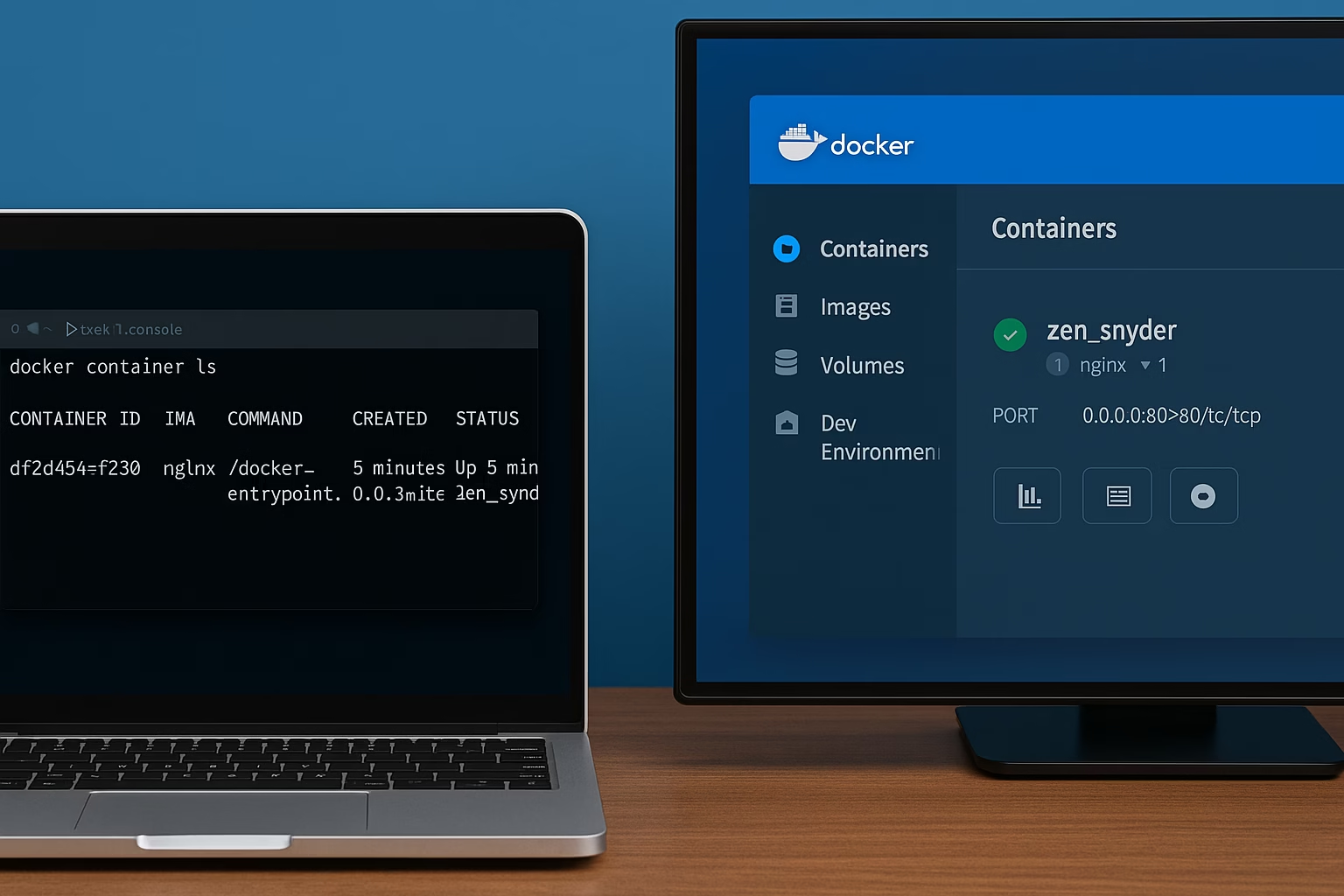If you’re building and deploying containers on Windows, you’ve probably encountered either WSL 2 or Docker Desktop. While they’re closely related, they’re not interchangeable, and knowing which to use, and when, can drastically affect your system performance, development workflows, and licensing costs.
In this article, I’ll cover the pros and cons of each, compare their resource usage (including vmmemWSL usage), and help you choose the right tool for your use case.
Table of Contents
What Are WSL 2 and Docker Desktop?
WSL 2 (Windows Subsystem for Linux 2)
WSL 2 is a full Linux kernel running on Hyper-V inside Windows. It enables near-native Linux performance on Windows and supports most developer workflows, including Docker, without the need for a full virtual machine or dual-booting.
Docker Desktop
Docker Desktop is the official GUI-based Docker platform for Windows, and macOS, which includes:
- Docker Engine
- Kubernetes support
- GUI tools for container management
- Built-in WSL 2 backend for Windows

WSL 2 vs Docker Desktop: Feature Comparison
| Feature | WSL 2 | Docker Desktop |
|---|---|---|
| Installation Size | Lightweight | Heavier (GUI + extras) |
| System Tray App | ❌ | ✅ |
| GUI Tools | Terminal-based | Full GUI (containers, volumes, etc.) |
| Resource Usage | Leaner if used directly | Higher even when idle |
| Licensing | Free (Windows feature) | Requires licence for teams > 250 employees or > $10M revenue |
| Ease of Use | Requires setup (Docker CLI in Linux) | Turnkey experience |
| Container Support | Full via docker-ce | Full via integrated engine |
| Kubernetes Support | Manual | Built-in |
Performance & Resource Usage (2025)
WSL 2: More Efficient for Terminal Work
When running Docker CLI inside a WSL 2 Linux distro (like Ubuntu), memory usage stays lean, especially if you limit it via .wslconfig.
Typical memory footprint: ~200MB idle, spikes under load, and I have seen it as high as 2.5GB before
CPU impact: Low, unless you’re running resource-heavy containers
Docker Desktop: Feature-Rich, But Higher Resource Usage
While Docker Desktop is user-friendly, it can feel a bit bloated at times:
- Background services consume RAM even when no containers are running
- Docker Desktop also runs on WSL 2, so you get vmmemWSL usage too
Typical memory footprint: ~500MB–1.5GB when idle
CPU impact: Moderate depending on which services are enabled (e.g., Kubernetes, automatic updates)
Licensing: What Changed?
As of 2022 and still in 2025, Docker Desktop is no longer free for commercial use for companies with over 250 employees or $10M revenue. WSL 2 remains free for all users, built into Windows 10/11
TL;DR:
- Individual developers and small teams? Docker Desktop is still free
- Enterprise orgs? You’ll need a paid Docker subscription — or consider WSL-native Docker as an alternative
Use Case Recommendations
| Use Case | Recommended Tool |
|---|---|
| Lightweight dev on Windows | WSL 2 + Docker CLI |
| Teaching or experimenting | Docker Desktop |
| CI/CD on local dev machines | WSL 2 (scriptable, no GUI bloat) |
| Full-featured Docker experience | Docker Desktop |
| Enterprise dev with licensing concerns | WSL 2 (free + compliant) |
How to Run Docker in WSL 2 Without Docker Desktop
If you want to ditch Docker Desktop but still use Docker:
1) Install WSL 2 and a Linux distro (Ubuntu recommended)
2) Install Docker inside the distro:
sudo apt update
sudo apt install docker.io
sudo usermod -aG docker $USER3) Enable Docker daemon at login or run it manually:
sudo service docker startTip: You can use VS Code with the WSL extension to manage Docker CLI from Windows with no Docker Desktop installed.
Final Verdict: Which One Should You Use in 2025?
If you’re an IT leader or developer managing licensing, or prefer a terminal-based workflow:
Go with WSL 2 + native Docker for full control and reduced overhead.
If you’re new to Docker or want an out-of-the-box GUI:
Docker Desktop is easier — just watch resource usage and licensing.
Either way, WSL 2 is at the heart of both approaches — and learning to optimise it (e.g. by controlling vmmemWSL memory usage) will improve performance across the board.
Personally, I’ve always liked Docker Desktop, but I’ve recently started using VS Code more with the WSL extension, but I keep coming back to Docker Desktop.

